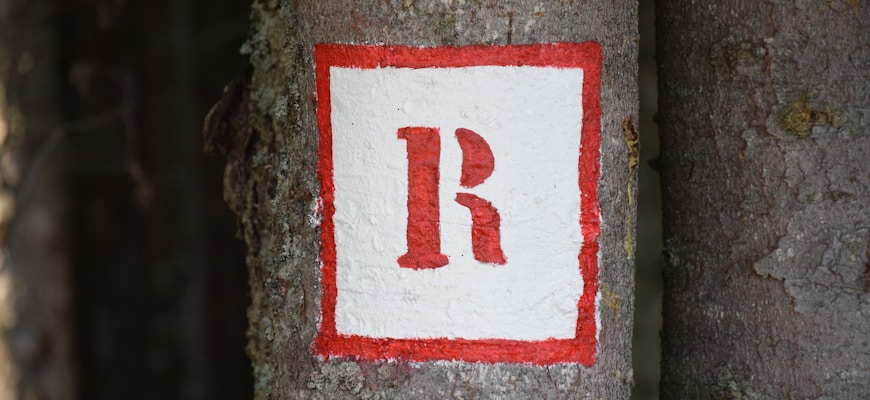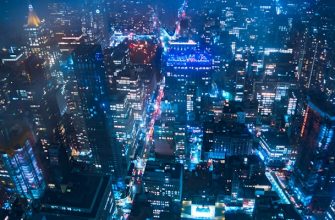- The Rise of Real World Assets in the Digital Economy
- How Blockchain Technology is Transforming Physical Assets
- Navigating the Legal Landscape of RWA: Challenges and Opportunities
- The Role of Tokenization in Unlocking Real World Value
- Real World Assets vs. Cryptocurrencies: Key Differences Explained
- Future Trends: The Integration of RWAs in Decentralized Finance
The Rise of Real World Assets in the Digital Economy
The emergence of Real World Assets (RWA) in the digital economy marks a significant transformation in how assets are perceived and utilized. As technology continues to evolve, RWAs bridge the gap between tangible assets and their digital representations, leading to increased accessibility and efficiency. This shift facilitates a more inclusive financial ecosystem, allowing investors to engage with various asset classes that were previously difficult to access.
In the context of the digital realm, RWAs encompass a wide array of assets, including real estate, commodities, and even intellectual property. The integration of these assets into blockchain technology enhances transparency and security, providing a robust framework for asset transactions. This technological advancement not only streamlines the process but also ensures that ownership and provenance are verifiable, reducing the potential for fraud.
- Increased Liquidity: RWAs can be tokenized, allowing for fractional ownership and enabling liquidity in markets that were traditionally illiquid.
- Global Accessibility: Digital platforms open up opportunities for investors worldwide, democratizing access to various assets.
- Enhanced Security: Blockchain technology provides a secure method for recording transactions, ensuring that asset ownership is protected.
- Cost Efficiency: The digitization of assets reduces the costs associated with traditional transactions, making investments more affordable.
The rise of RWAs in the digital economy signifies a shift towards a more interconnected and efficient marketplace. By leveraging technology, investors can engage with real-world assets in innovative ways, transforming how these assets are bought, sold, and managed. As more stakeholders recognize the potential of RWAs, the demand for digital representations of tangible assets is expected to grow, further solidifying their role in the future of finance.
How Blockchain Technology is Transforming Physical Assets
Blockchain technology is revolutionizing how physical assets are perceived and managed in the digital age. By enabling the tokenization of real-world assets (RWA), blockchain creates a bridge between tangible items and their digital representations. This transformation not only enhances liquidity but also simplifies the process of buying, selling, and trading these assets.
Tokenization allows physical assets such as real estate, art, and commodities to be represented as digital tokens on a blockchain. These tokens can signify ownership rights, fractional ownership, or even specific attributes of the asset. As a result, blockchain technology facilitates greater accessibility and democratization of asset ownership.
- Enhanced Liquidity: Tokenization of physical assets enables easier trading, increasing market participation and reducing barriers to entry.
- Transparency: Blockchain provides a public ledger that ensures all transactions are recorded and verifiable, fostering trust among participants.
- Reduced Costs: By eliminating intermediaries, blockchain technology minimizes fees associated with traditional asset transactions.
- Fractional Ownership: Investors can own a portion of high-value assets, making it feasible for more people to invest in previously inaccessible markets.
- Smart Contracts: These programmable contracts automate and enforce terms of agreements, ensuring compliance without the need for third-party involvement.
The integration of blockchain technology in managing physical assets not only streamlines ownership and transfer processes but also opens up new avenues for investment. As the adoption of blockchain continues to grow, the landscape of real-world assets is poised for a significant shift, leading to more innovative financial solutions and investment opportunities.
Navigating the Legal Landscape of RWA: Challenges and Opportunities
Navigating the legal landscape of Real World Assets (RWA) presents a unique set of challenges and opportunities for investors and businesses alike. As the digitization of assets continues to evolve, understanding the regulatory framework governing RWAs becomes increasingly critical. Key legal considerations include compliance with securities laws, property rights, and contract enforcement.
- The complexity of existing regulations can create barriers to entry for new participants in the RWA market.
- Opportunities arise from the potential for increased accessibility and liquidity of traditionally illiquid assets.
- Investors must be vigilant about the legal risks associated with digital representations of physical assets.
- Collaboration with legal experts can facilitate a better understanding of the RWA landscape and mitigate risks.
- Staying informed about regulatory changes is essential for leveraging RWA opportunities effectively.
As the RWA sector matures, the importance of robust legal frameworks cannot be overstated. Effective navigation of these legalities not only safeguards investments but also enhances the credibility of the RWA market. Continuous dialogue between regulators, businesses, and legal professionals will be pivotal in shaping a sustainable future for RWAs in the digital realm.
The Role of Tokenization in Unlocking Real World Value
Tokenization has emerged as a transformative technology in the realm of Real World Assets (RWA), enabling the conversion of physical assets into digital tokens on a blockchain. This process unlocks significant value by enhancing liquidity, accessibility, and security in asset management. By representing tangible assets such as real estate, art, or commodities as tokens, tokenization facilitates fractional ownership, allowing multiple investors to participate in the value of high-value assets.
One of the primary advantages of tokenization is its ability to streamline transactions. Traditional methods of buying and selling assets can be cumbersome, involving lengthy paperwork and intermediaries. In contrast, tokenized assets can be traded seamlessly on blockchain platforms, reducing transaction times and costs. This efficiency opens up new opportunities for investors and allows for real-time trading of RWAs.
- Liquidity: Tokenization increases the liquidity of traditionally illiquid assets, making it easier for investors to buy and sell their stakes.
- Accessibility: By lowering the barriers to entry, tokenization enables a broader range of investors to engage with RWAs.
- Security: The use of blockchain technology offers enhanced security features, reducing the risk of fraud and ensuring transparency in asset ownership.
Furthermore, tokenization promotes global participation in the market for RWAs. Investors from different geographical locations can easily access and invest in a diverse array of assets, thereby diversifying their portfolios. This global reach not only benefits investors but also enhances the overall market for tokenized assets.
As the adoption of tokenization continues to grow, regulatory frameworks are also evolving to accommodate this innovative approach. Regulatory clarity will further bolster confidence among investors and promote the integrity of tokenized RWAs. Overall, the role of tokenization in unlocking the value of Real World Assets is pivotal, paving the way for a more inclusive and efficient asset management landscape.
Real World Assets vs. Cryptocurrencies: Key Differences Explained
In the evolving landscape of finance, understanding the distinctions between real world assets (RWA) and cryptocurrencies is crucial. Real world assets are tangible items with intrinsic value, such as real estate, commodities, and art. In contrast, cryptocurrencies are digital currencies that operate on blockchain technology, offering a decentralized alternative to traditional financial systems.
One of the primary differences lies in their inherent nature. Real world assets are physical and can be appraised based on market conditions, while cryptocurrencies exist solely in the digital realm, relying on supply and demand dynamics. This fundamental disparity affects their stability, liquidity, and regulatory environment.
- Stability: Real world assets tend to provide more stability due to their backing by tangible value. Cryptocurrencies, however, can experience significant price volatility driven by market speculation.
- Liquidity: Cryptocurrencies generally offer higher liquidity, allowing for quick transactions on various exchanges. In contrast, real world assets often require more time for buying and selling, involving legal processes and negotiations.
- Regulation: Real world assets are usually subjected to stringent regulations, ensuring consumer protection and market integrity. Cryptocurrencies face a more ambiguous regulatory landscape, which can vary significantly by jurisdiction.
- Ownership: Ownership of real world assets is documented and legally recognized, while cryptocurrencies often operate on a pseudonymous basis, which can complicate ownership verification.
Ultimately, both real world assets and cryptocurrencies play unique roles in the financial ecosystem. Real world assets provide a secure, stable investment option, while cryptocurrencies offer innovative solutions for decentralized finance. Understanding these differences can empower investors to make informed decisions in an increasingly digital economy.
Future Trends: The Integration of RWAs in Decentralized Finance
The integration of Real World Assets (RWAs) into Decentralized Finance (DeFi) is poised to redefine the financial landscape significantly. RWAs, which include tangible assets such as real estate, commodities, and intellectual property, are set to bridge the gap between traditional finance and blockchain technology. This convergence enables enhanced liquidity, increased accessibility, and broader market opportunities.
As RWAs gain traction in the DeFi sector, various trends are emerging that highlight their impact:
- Tokenization of Assets: The process of converting physical assets into digital tokens allows for fractional ownership and easier transferability. This democratizes access to investments that were once limited to high-net-worth individuals.
- Improved Liquidity: By integrating RWAs into decentralized platforms, liquidity is enhanced, facilitating quicker transactions and reducing the barriers to entry for investors.
- Regulatory Clarity: As governments and financial institutions recognize the role of RWAs in DeFi, clearer regulations are emerging. This fosters trust and encourages more participants to engage in these innovative financial ecosystems.
- Interoperability: The future of RWAs in DeFi will likely focus on interoperability between various blockchain networks, enhancing user experience and broadening market reach.
- Enhanced Security: With the integration of RWAs, DeFi platforms are expected to adopt advanced security measures, safeguarding user assets and fostering confidence in decentralized systems.
In conclusion, the future of RWAs within the DeFi space is bright, driven by these emerging trends. As the integration of RWAs continues, the prospects for innovation and growth in the decentralized finance sector will expand, creating a more inclusive and efficient financial environment.









